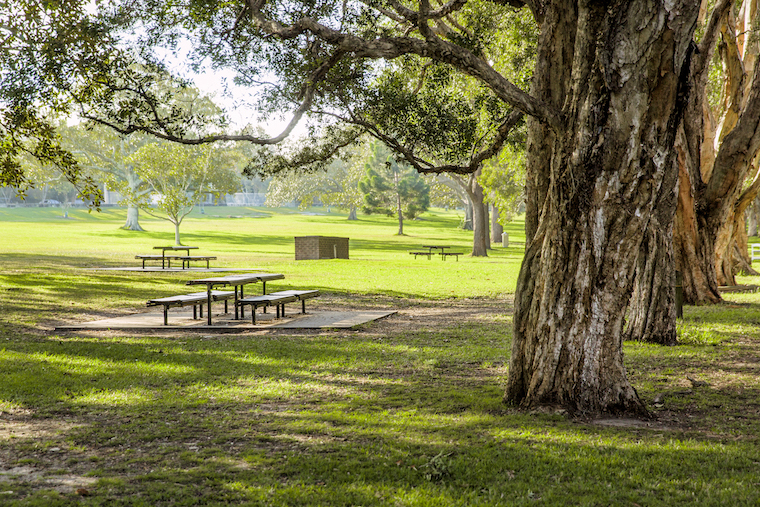Everybody likes green space – residents and local councils in particular, but also developers who know it adds commercial value. However, not many people in the community know how to make a case for better green space nor who to approach to make this happen. Now a new large scale research project from the 202020 Vision program has come up with a community engagement kit that can change this.
As far as community understanding of green urban spaces goes it seems the majority of people understand its value but few know how to advocate for more and better green space, or even who is responsible for it.
New research for the 202020 Vision program that interviewed 1600 people found the vast majority of people – 92 per cent – support the idea of greening in their local areas, but some are still not convinced green space and urban trees are essential for a liveable built environment.
More concerning is that nearly three quarters of respondents – 72 per cent – don’t know that their local council is responsible for delivering green urban spaces, nor do they know how to advocate for improving their green spaces.
More than half – 59 per cent – are unwilling, or indifferent to volunteering maintenance for trees and open space and 67 per cent are not inclined to lobby local government to increase its quantity.
Chief executive of CoDesign Studio Valli Morphett said the survey shows that councils need to engage more with their communities to explain their role and activities in the urban green space to garner their support.
“There has long been a disconnect between community action and council initiative, despite both groups prioritising green space for broadly the same reasons including aesthetics, recreation, mental and physical health benefits,” Morphett says.
Who’s With Us? A new engagement toolkit designed to solve the problem
So, using the results of the survey and drawing on the advice of experts, 202020 Vision has developed a new community engagement kit to help councils and the community improve their green open spaces.
The toolkit outlines 10 steps to motivate people to understand more about their green surrounds. It also outlines the barriers that stop councils and community members from supporting urban greening.
The toolkit addresses significant differences in attitudes on why green space matters.
The community, for instance, values green open space for its recreation opportunities and aesthetics. Developers, on the other hand, factor in increases in property value or heat mitigating impact.
“Community members predominantly value green spaces for how they directly and positively impact their daily lives,” Morphett notes.
Changing the language can help with understanding. For instance “urban heat island effect” and “resilience” may suit urban planners and academics but may not speak to many members of the community.
The toolkit equips councils and others with information that makes these elements clear. It also offers free collateral to help communicate key benefits of green space in ways that make sense to community members.
The kit includes customisable posters, signs and artwork for attaching straight to trees, plus advertising assets. The messaging highlights key benefits including shading, habitat for local species, cleaner air and a more appealing urban environment.
Councils leading the way
A number of councils are already aboard urban greening programs proving that ownership and engagement works. These include the City of Brisbane, City of Vincent in Western Australia and Waverley Council in New South Wales.
Brisbane has provided more than 600,000 plants and trees to residents over 10 years in its giveaway program, Waverley has a new program to connect habitat corridors and Vincent has an adopt-a-tree or verge program.
Developers understand the benefits of green space
Ben Willsmore, South Australian President of the Australian Institute of Landscape Architects, says large-scale greenfields and brownfields subdivisions in South Australia have recognised greening of the public realm has a “very important role to play” in attracting buyers.
Greening is now included in the initial land planning because it “demonstrates the quality of life people are buying into.”
In the past, Willsmore says, if a park was included it was generally a small piece of land that was unsuitable for putting a home on due to slope, soil conditions or other limitations.
Today it’s different. Developers now understand they are “selling a neighbourhood” and that means a project having a look and feel that includes building a great park, adding mature street trees and putting turf on verges – not just presenting potential buyers with a cleared landscape decorated with surveyor’s pegs to indicate lots.
Willsmore says that there is, however, still a challenge with smaller, infill type projects of only a few homes, where lots are often nearly fully occupied by buildings, with no room for a tree.
While it might be tempting to impose rules that every dwelling is required to include trees, some people simply do not like them, Willsmore says.
Willsmore suggests planning systems should focus on ensuring there is room for the next person who owns a property to plant trees if they are so inclined.
Trees are important, he says, because they act as “green veins” that provide urban cooling, biodiversity and moisture.
There is also the positive impact on planning footpaths, parking and services in ways that can provide “the best canopy cover possible”.
“I think our streets are important in terms of maximising the benefits of trees in terms of health, wellbeing and economics,” Willsmore says.
Access the toolkit or visit the 202020 Vision website
Tags: 202020, council, green space, urban greening
Source: The Fifth Estate







